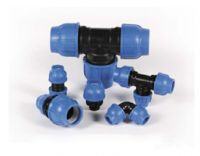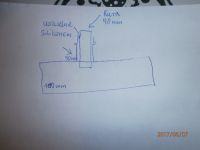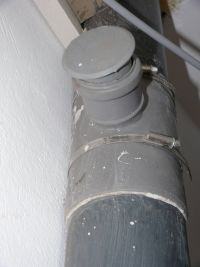Hello. The situation is as follows. There is a typical 110mm gray PVC pipe in the floor and I made a 50mm entrance there. Ideally, it would be enough to break off enough to install a tee with an entrance of 50 mm. However, this is too much forging and demolishing. I did it like this. I forged a little. I made a 110mm hole in the pipe, then took a cut and cut the tee over the pipe. I roughened the outside pipe and the inside tee and degreased it. I smeared it with sanitary silicone, put the tee on the pipe and squeezed it with four metal ties. Overall it works fine, but the problem is with the silicone. There is a slight leak every few months. I have no idea what to use instead of silicone? What glue or maybe resin would be watertight and water-resistant?






